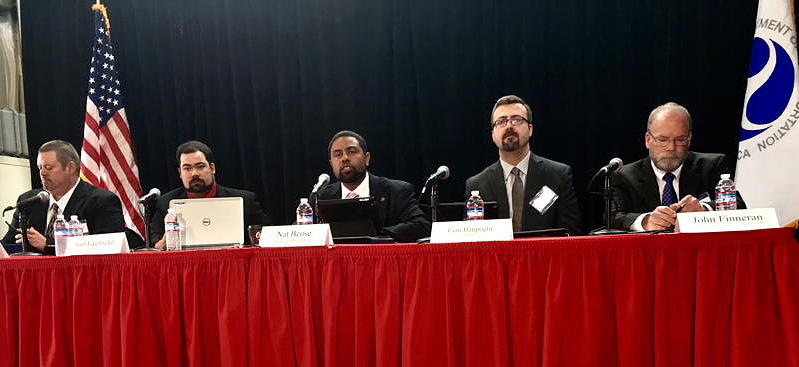At The CARS Facilities at Stanford University
From the NHTSA website:
“At this meeting, NHTSA seeks input on planned operational guidelines for the safe deployment of automated vehicles (AV). Of high importance to the agency is information on the roadway scenarios and operational environments that highly automated vehicles will need to address, and the associated design and evaluation processes and methods needed to ensure that AV systems are able to detect and appropriately react to these scenarios.”

The following is Susan Henderson’s Testimony:
Good morning. I’m Susan Henderson, the Director of Disability Rights Education & Defense Fund. Thank you for this opportunity.
 There is no doubt that autonomous vehicles will change the world as we know it, and they will dramatically change the lives of people with disabilities who can’t currently drive or obtain a drivers license.
There is no doubt that autonomous vehicles will change the world as we know it, and they will dramatically change the lives of people with disabilities who can’t currently drive or obtain a drivers license.
Self-driving cars can cause the kind of disruption in the lives of people with disabilities that the invention of the automatic washing machine did for women. But, the promise of the technology will only be realized if the cars are truly accessible to people with disabilities, and the laws and policies developed by states or the federal government do not present unnecessary restrictions based on myths or fear.
NHTSA’s model state policies for AV operating or licensing users must preclude discrimination on the basis of disability by states or any other governmental authority.
Autonomous vehicles, or AVs, hold great potential to advance social inclusion by offering people with a variety of disabilities independent mobility. We will able to get to school, get jobs, cruise Main Street on a Friday night, and participate in activities that other Americans take for granted every day.
They offer the possibility of ending the isolation many people who are aging experience by helping us keep doing things like volunteering that are often lost when we lose the ability to drive.
It’s important to remember that it is not just people who are blind or have vision impairments who are unable to drive. There are a lot of us who can’t drive because of impairments. For example, people with traumatic brain injury, some people with intellectual disabilities, people with seizures that aren’t controlled with medication; people with limited arm movement. This diversity of impairment must be kept in mind during the development of AV technologies, and when laws and policies are written.
Without explicit inclusion of accessibility in the development of AV technologies, their potential for bringing independence and increasing social inclusion decreases.
For example, equal access to the Internet for people who are blind, people who are Deaf, have low-vision or other disabilities was not considered by web developers, and many people with disabilities experienced unnecessary obstacles to information and still do.
We urge NHTSA, software developers, designers and manufacturers to keep in mind that a car that can operate in autonomous mode without driver intervention can make an incredible difference in the life of a person with a disability, but not if they can’t open the door to use it, can’t enter with their wheelchair, hear instructions from the vehicle, or access a screen to give operating directions.
Why not take advantage of this revolutionary time in the auto and transportation industry to ensure that both the design of the software and the hardware work for people with disabilities?
Technology and policy can come together to ensure that people with disabilities are not excluded if governments adopt a graduated approach to licensing that limits the use of cars in certain environments and conditions.
If a car can be licensed to operate autonomously in good weather on the freeways and streets of the Bay Area, but not on Interstate 50 in the Sierras during the winter, there is no reason why a person with a disability should be denied the right to use the car. Discrimination on the basis of disability must not be allowed. Especially given the significant funding flowing from the federal government.
Finally, I strongly urge NHTSA, the states, and all of the people involved in this incredibly cool technology to include people with disabilities in your work. While we are a very diverse community, there’s one thing that people with all kinds of disabilities agree on, there should be “Nothing about us without us.”
